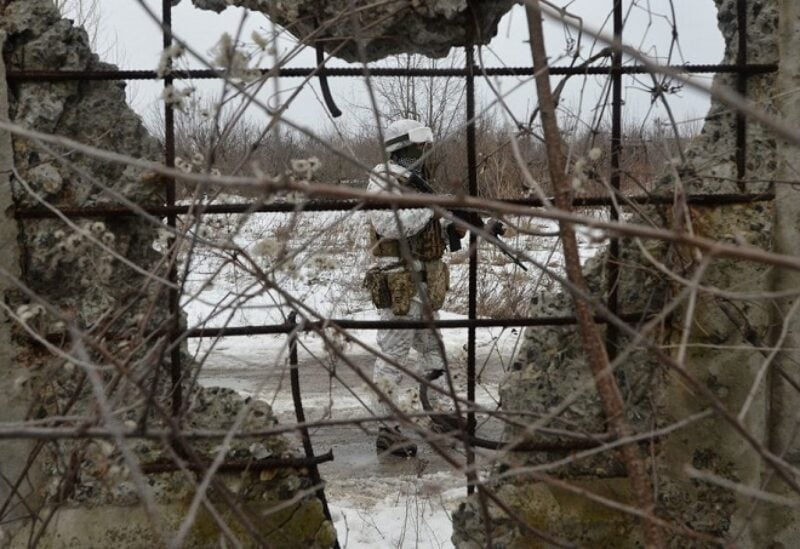
A service member of the Ukrainian armed forces walks at combat positions near the line of separation from Russian-backed rebels outside the town of Avdiivka in the Donetsk Region, Ukraine February 10, 2022. REUTERS/Oleksandr Klymenko/File Photo
A hypothetical Russian invasion of Ukraine would have repercussions in a variety of markets, from wheat and energy prices to the region’s sovereign dollar bonds to safe-haven assets and stock markets.
The five charts below demonstrate where a potential escalation of tensions across global markets might be felt:
1/SAFE HAVENS
A large risk event often sends investors running back to bonds, which are widely seen as the safest investments, and this time may be no exception, even if a Russian invasion of Ukraine risks further fanning oil prices – and so inflation.
Inflation at multi-decade highs and impending interest rate rises have made for a tetchy start to the year for bond markets, with U.S. 10-year rates still hovering close to the key 2% level and German 10-year yields above 0% for the first time since 2019.
But an outright Russia-Ukraine conflict could change that.
In forex markets, the euro/Swiss franc exchange rate is seen as the biggest indicator of geopolitical risk in the euro zone as the Swiss currency has long been viewed by investors a safe haven. It hit its strongest levels since May 2015 in late January.
Gold, also seen as a shelter in times of conflict or economic strife, is clinging to 13 month peaks.
2/ GRAINS AND WHEAT
Any interruption to the flow of grain out of the Black Sea region is likely to have a major impact on prices and further fuel food inflation at a time when affordability is a major concern across the globe following the economic damage caused by the COVID-19 pandemic.
Four major exporters – Ukraine, Russia, Kazakhstan and Romania – ship grain from ports in the Black Sea which could face disruptions from any military action or sanctions.
Ukraine is projected to be the world’s third largest exporter of corn in the 2021/22 season and fourth largest exporter of wheat, according to International Grains Council data. Russia is the world’s top wheat exporter.
3/ NATURAL GAS & OIL
Energy markets are likely to be hit if tensions turn into conflict. Europe relies on Russia for around 35% of its natural gas, mostly coming through pipelines which cross Belarus and Poland to Germany, Nord Stream 1 which goes directly to Germany, and others through Ukraine.
In 2020 volumes of gas from Russia to Europe fell after lockdowns suppressed demand and did not recover fully last year when consumption surged, helping to send prices to record highs.
As part of possible sanctions should Russia invade Ukraine, Germany has said it could halt the new Nord Stream 2 gas pipeline from Russia. The pipeline is projected to increase gas imports to Europe but also underlines its energy dependence on Moscow.
Analysts expect natural gas exports from Russia to Western Europe to be significantly reduced through both Ukraine and Belarus in the event of sanctions, saying gas prices could revisit Q4 levels.
Oil markets could also be affected through curbs or disruption. Ukraine moves Russian oil to Slovakia, Hungary and the Czech Republic. Ukraine’s transit of Russian crude for export to the bloc was 11.9 million metric tones in 2021, down from 12.3 million metric tones in 2020, S&P Global Platts said in a note.
JPMorgan said the tensions risked a “material spike” in oil prices and noted that a rise to $150 a barrel would reduce global GDP growth to just 0.9% annualized in the first half of the year, while more than doubling inflation to 7.2%.